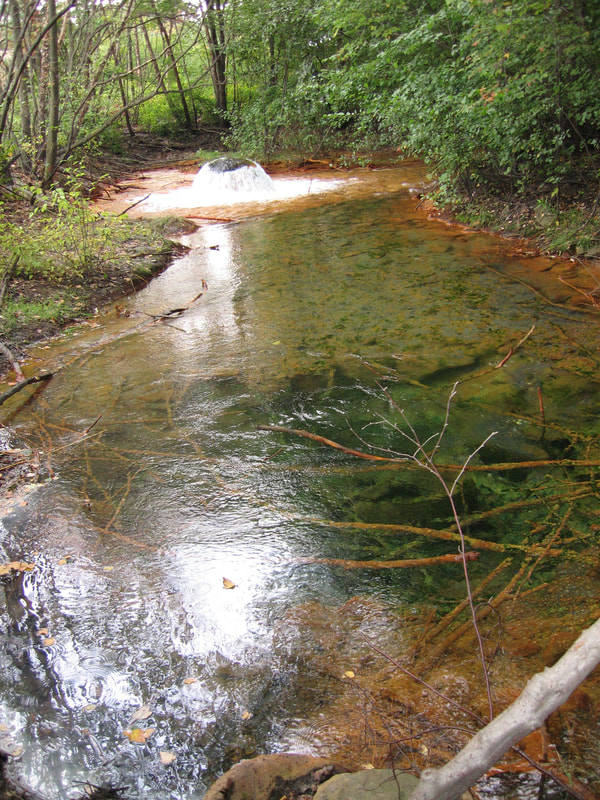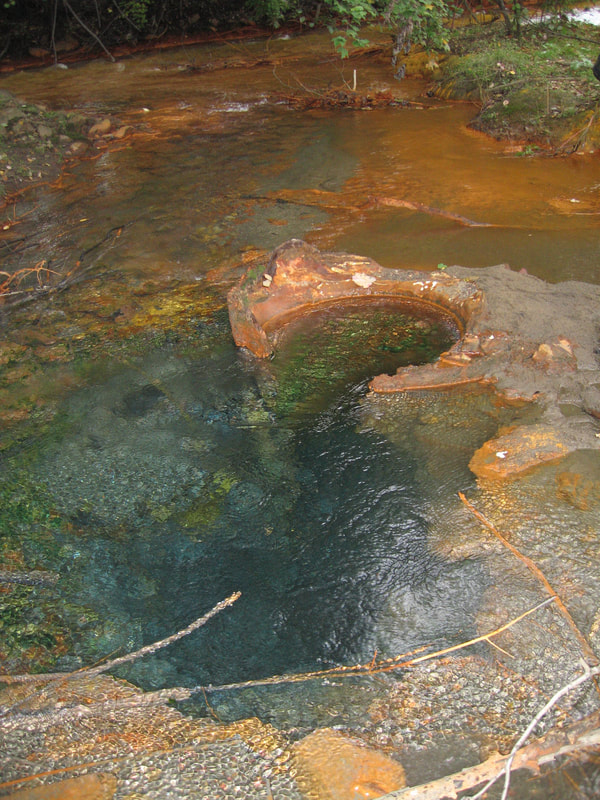Pittston - the end of deep underground coal mining in the Lackawanna Valley
In 1959 the Knox Mine Disaster put an abrupt end to coal mining throughout the Lackawanna Valley. Below Carbondale to Duryea near Pittston - water replaced fire filling the mines.
Twelve coal miners were killed in the Knox mine disaster. At least one was a Lithuanian American, Herman Zelonis. Their bodies were never recovered. He was a member of St. Casimir's Parish in Pittston and resided in nearby Swoyersville.
One of the dramatic results of the Knox Mine Disaster was what was called acid mine drainage (AMD). The water dilutes the iron oxide in the mines turning the creeks and the Lackawanna orange.
When the flooding in the mines began to effect the basements of homes and businesses all along the Lackawanna Valley from below Carbondale to Duryea near Pittston. The Army Corps of Engineers drilled a 400' bore hole to release the water. Since 1962 one hundred to one hundred fifty million gallons of orange water a day flow out into the Lackawanna River. The images are astounding. No fish are able to survive in the oxygen depleted water. It remains the single largest source of pollution to the Chesapeake Bay. In 2013 $1,000,000 was awarded from Marcellus Shale Act 13 to investors who, as of 2017, are planning to develop the technology to remove the uniquely formed iron oxide particles for pigments and use in the production of incendiary weapons. see: http://citizensvoice.com/news/plans-unveiled-to-treat-old-forge-borehole-drainage-1.1601029
The use of incendiary weapons has been banned by the 1980 Convention on Conventional Weapons. The United States consented to the protocol on incendiary weapons in 2009 with a reservation that was objected to by 17 nations, among them Great Britain, Germany and France.
One of the dramatic results of the Knox Mine Disaster was what was called acid mine drainage (AMD). The water dilutes the iron oxide in the mines turning the creeks and the Lackawanna orange.
When the flooding in the mines began to effect the basements of homes and businesses all along the Lackawanna Valley from below Carbondale to Duryea near Pittston. The Army Corps of Engineers drilled a 400' bore hole to release the water. Since 1962 one hundred to one hundred fifty million gallons of orange water a day flow out into the Lackawanna River. The images are astounding. No fish are able to survive in the oxygen depleted water. It remains the single largest source of pollution to the Chesapeake Bay. In 2013 $1,000,000 was awarded from Marcellus Shale Act 13 to investors who, as of 2017, are planning to develop the technology to remove the uniquely formed iron oxide particles for pigments and use in the production of incendiary weapons. see: http://citizensvoice.com/news/plans-unveiled-to-treat-old-forge-borehole-drainage-1.1601029
The use of incendiary weapons has been banned by the 1980 Convention on Conventional Weapons. The United States consented to the protocol on incendiary weapons in 2009 with a reservation that was objected to by 17 nations, among them Great Britain, Germany and France.
The Knox mine disaster and the bore hole are not far from the confluence of the Lackawanna with the Susquehanna pictured in this map.
The AMD stain can be seen flowing like blood from a wound out of the borehole in the Lackawanna River to the river's confluence with the Susquehanna.
At nearby Coxton Rail yard there is an archeological dig with dateable artifacts dating from 8025BC. For aeons, while Native Americans lived here, the rivers thrived with river shrimp, fresh water mollusks, eels, shad and numerous other fish. Within a century that changed with the unsustainable development of the coal industry in the northern anthracite coalfield. It is doubtful that the AMD will ever be cleaned up.
The AMD stain can be seen flowing like blood from a wound out of the borehole in the Lackawanna River to the river's confluence with the Susquehanna.
At nearby Coxton Rail yard there is an archeological dig with dateable artifacts dating from 8025BC. For aeons, while Native Americans lived here, the rivers thrived with river shrimp, fresh water mollusks, eels, shad and numerous other fish. Within a century that changed with the unsustainable development of the coal industry in the northern anthracite coalfield. It is doubtful that the AMD will ever be cleaned up.


